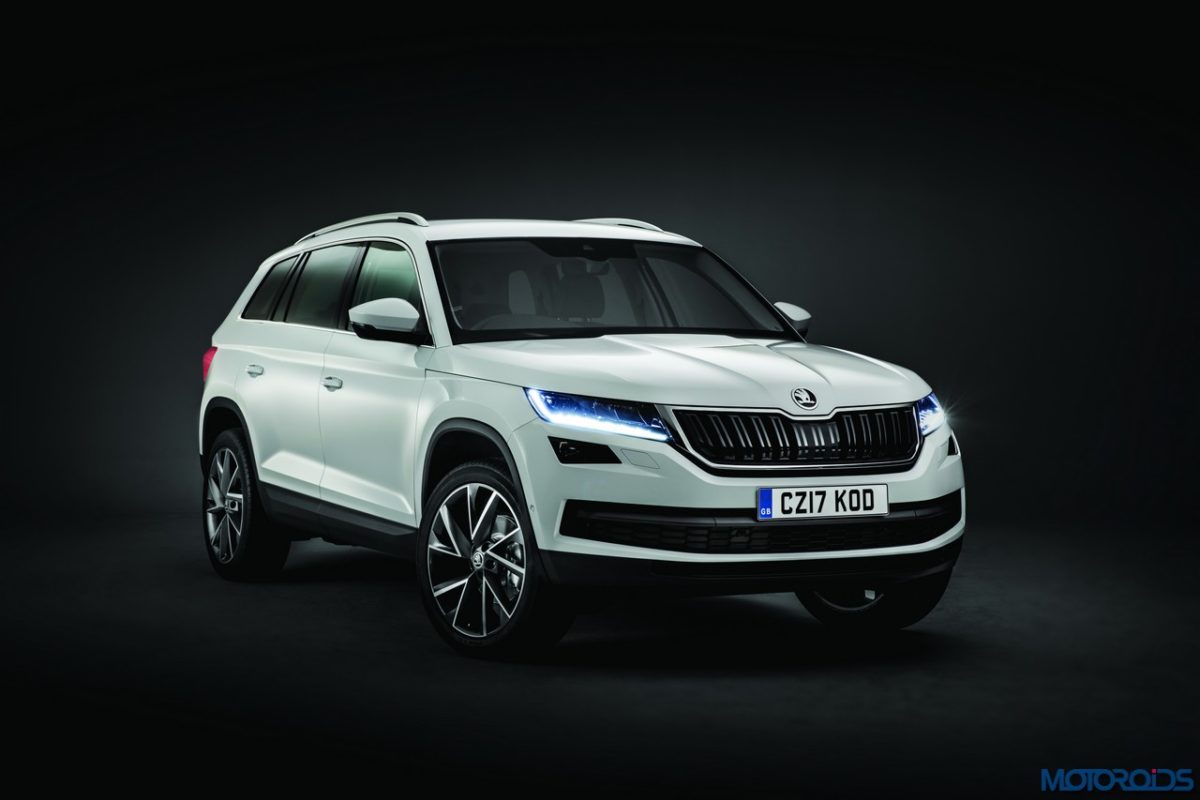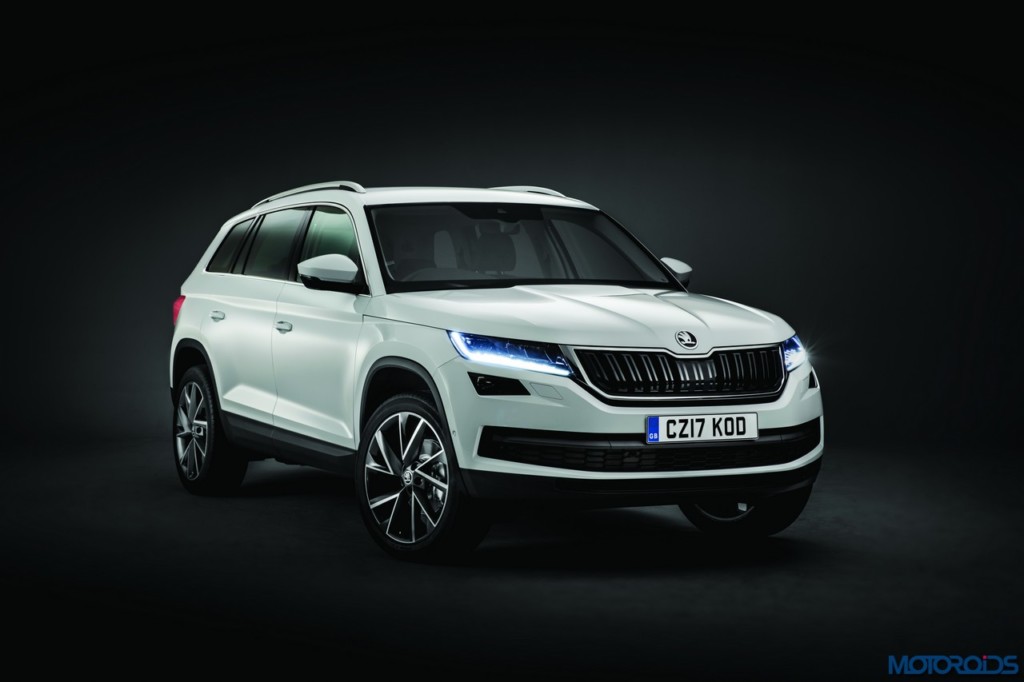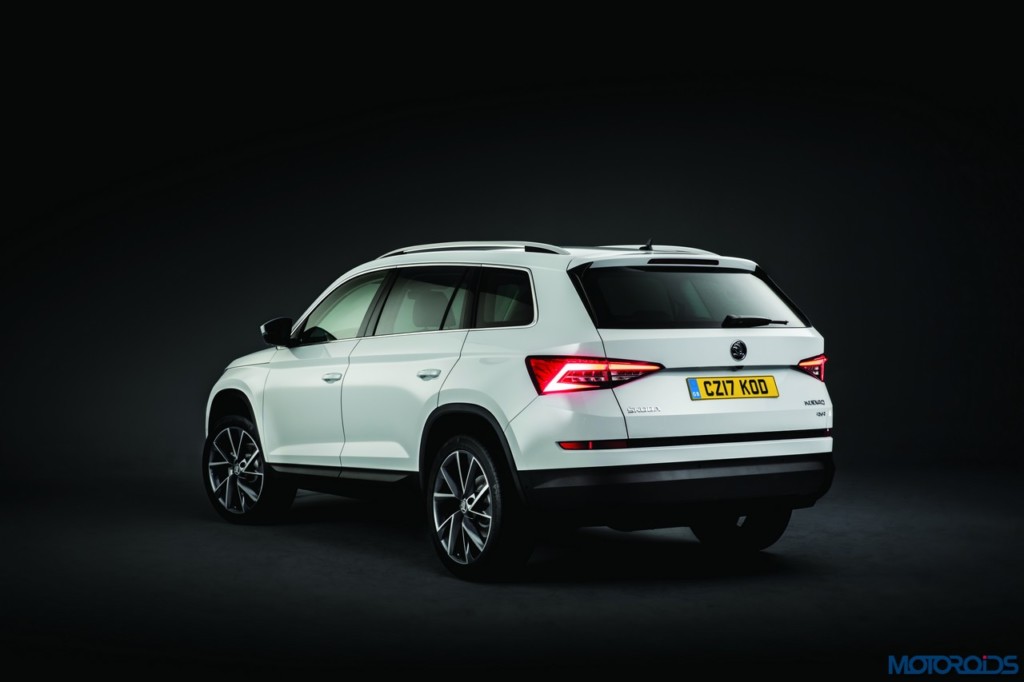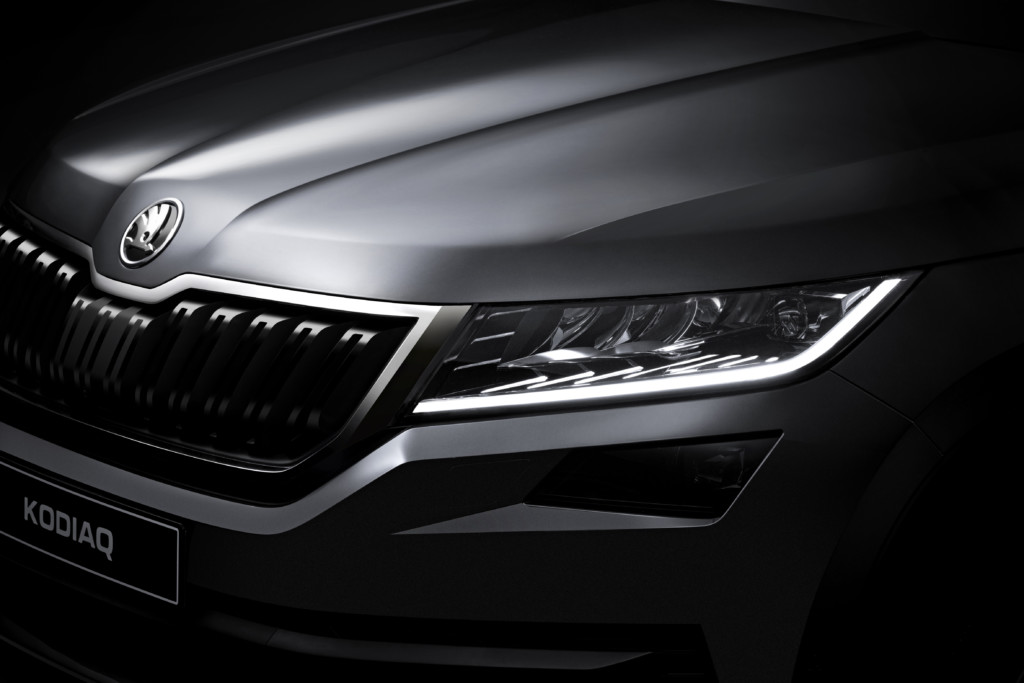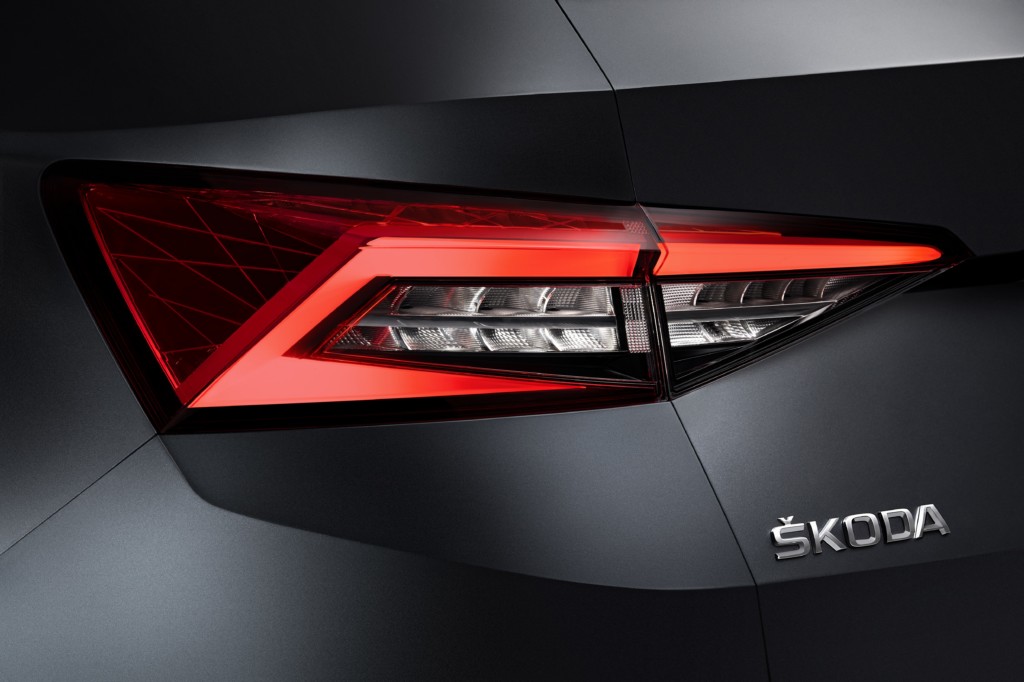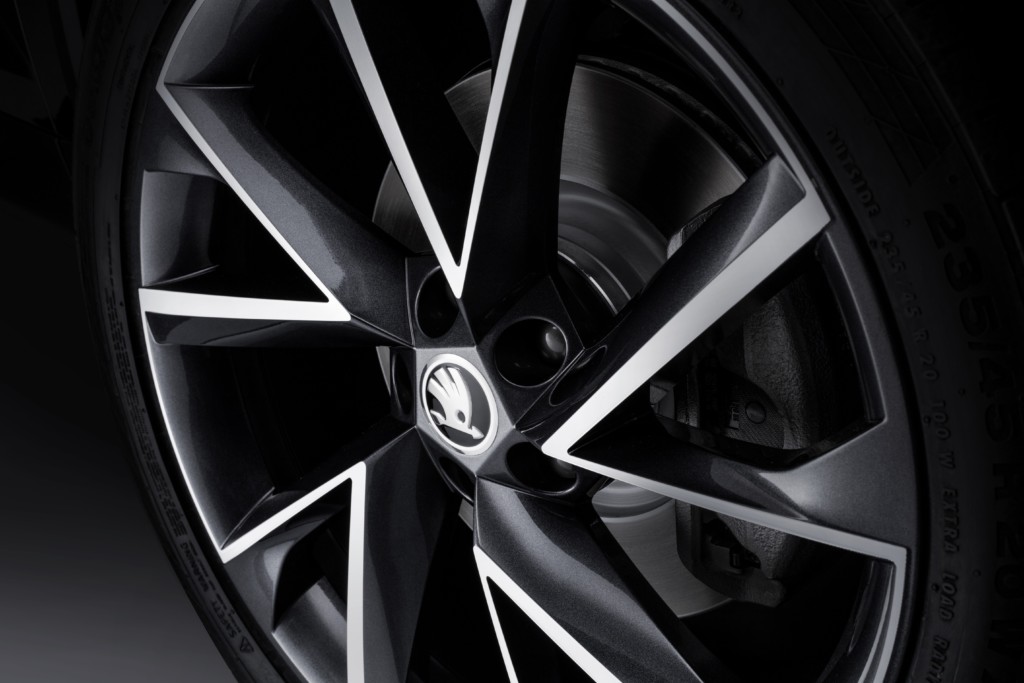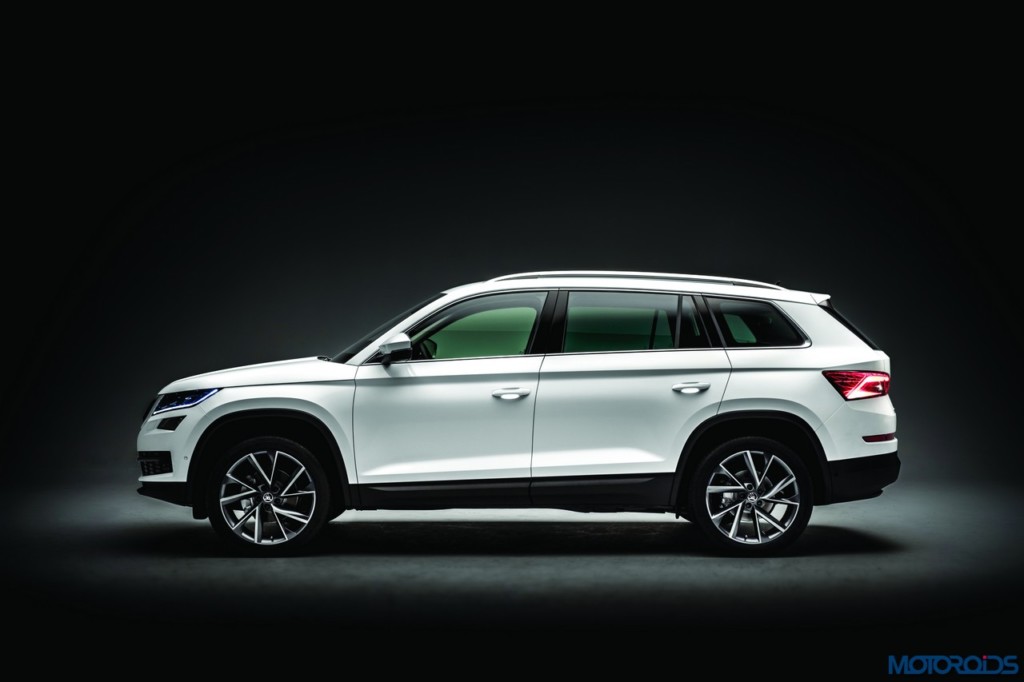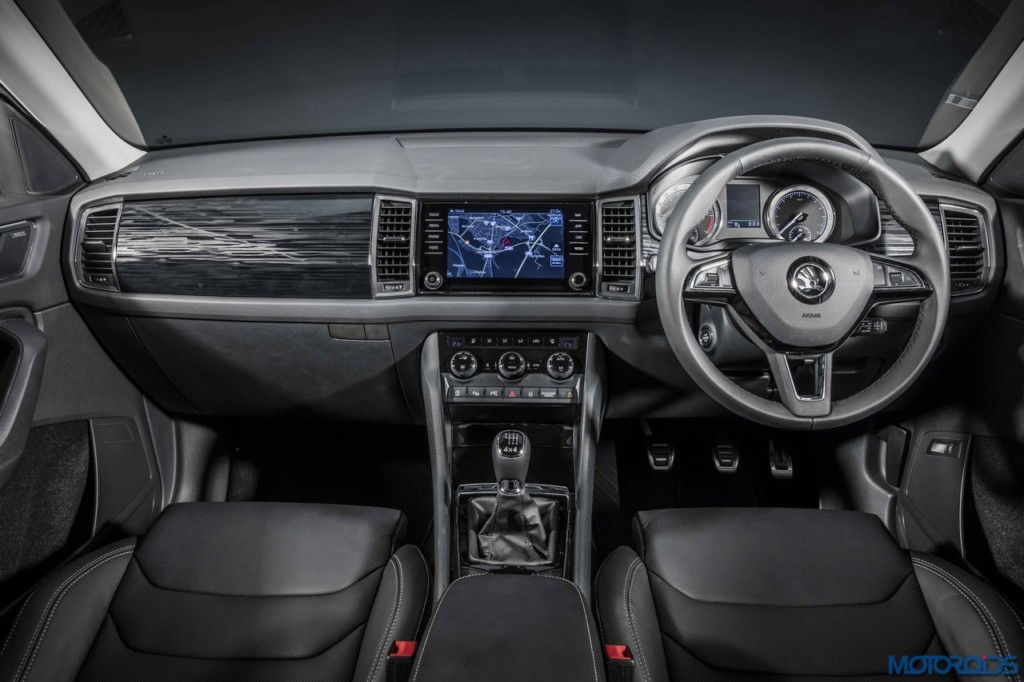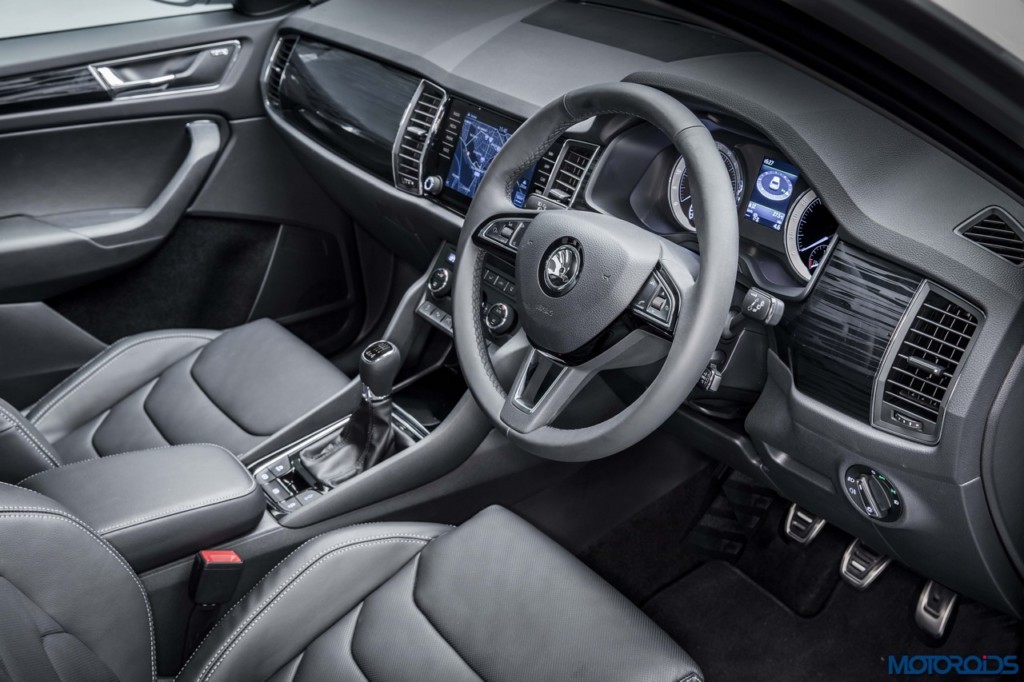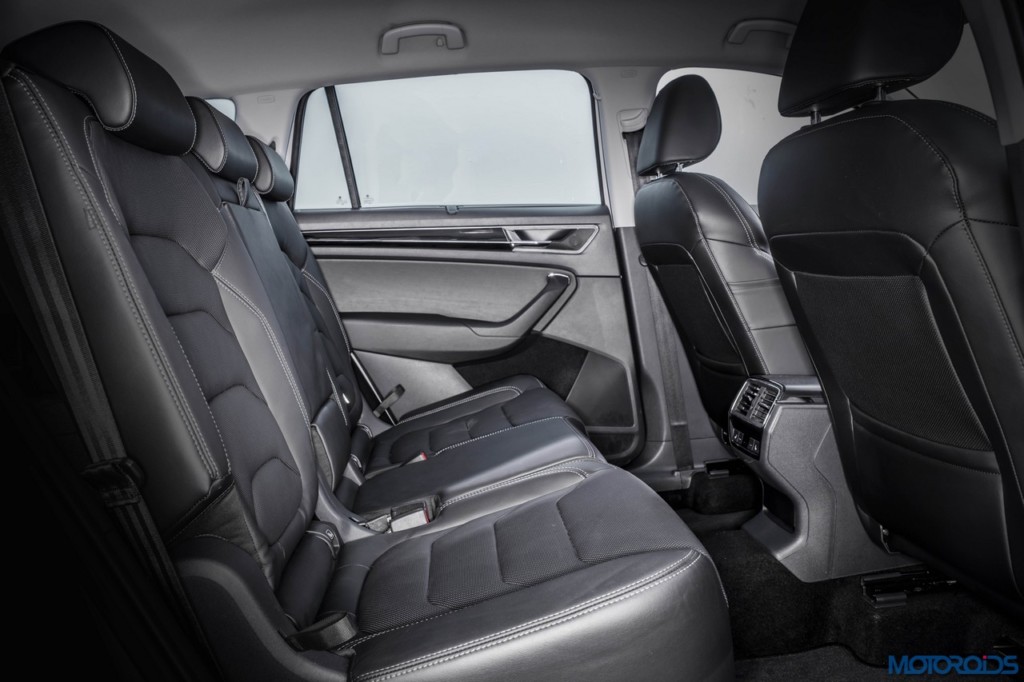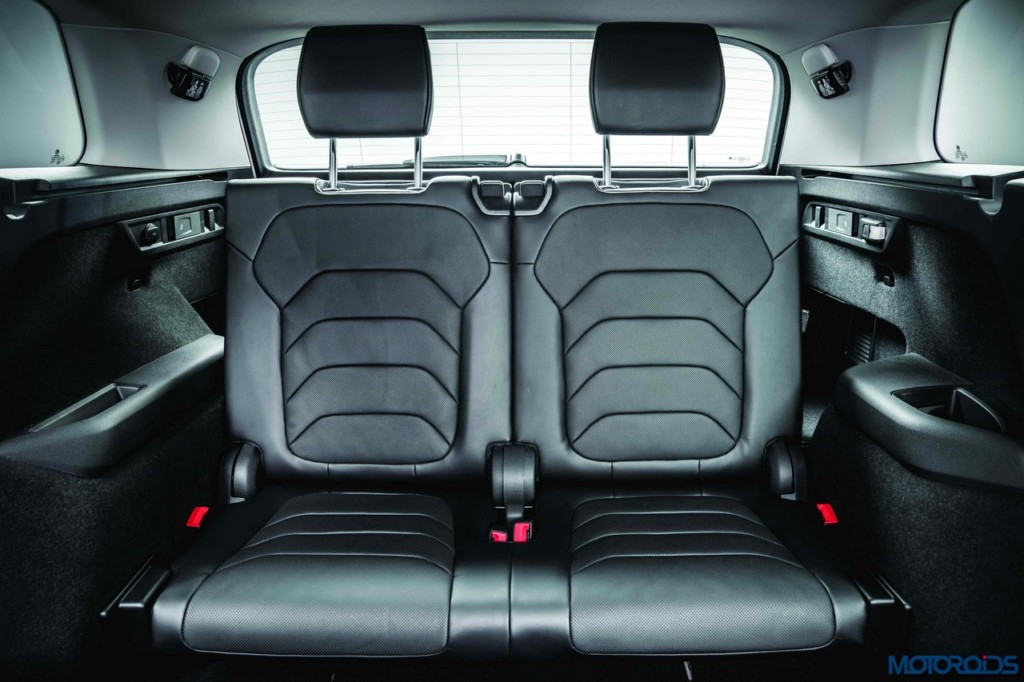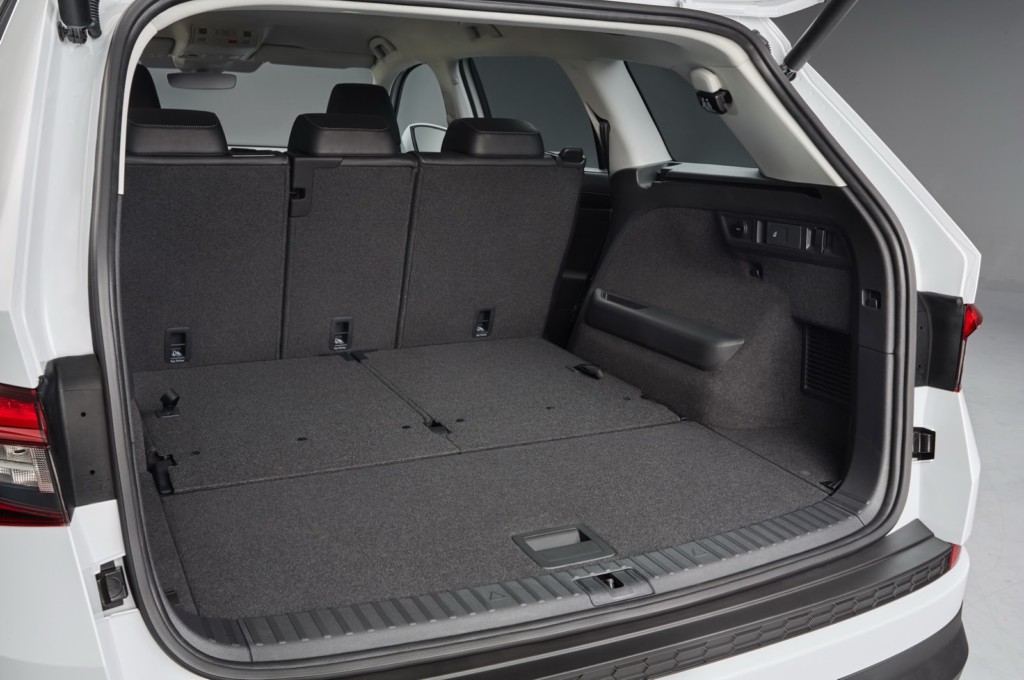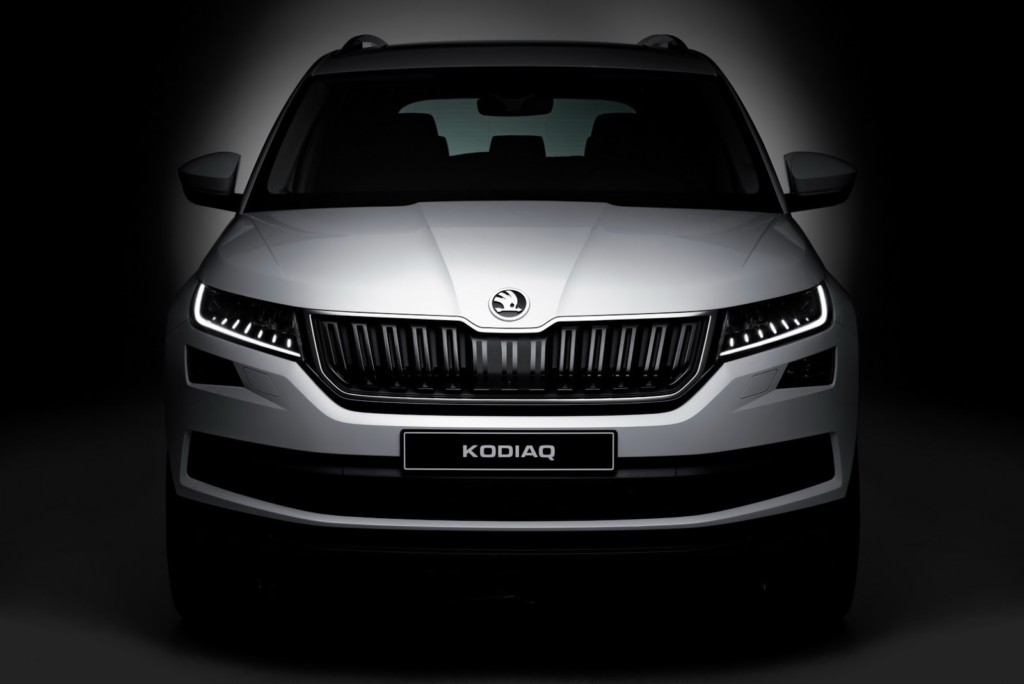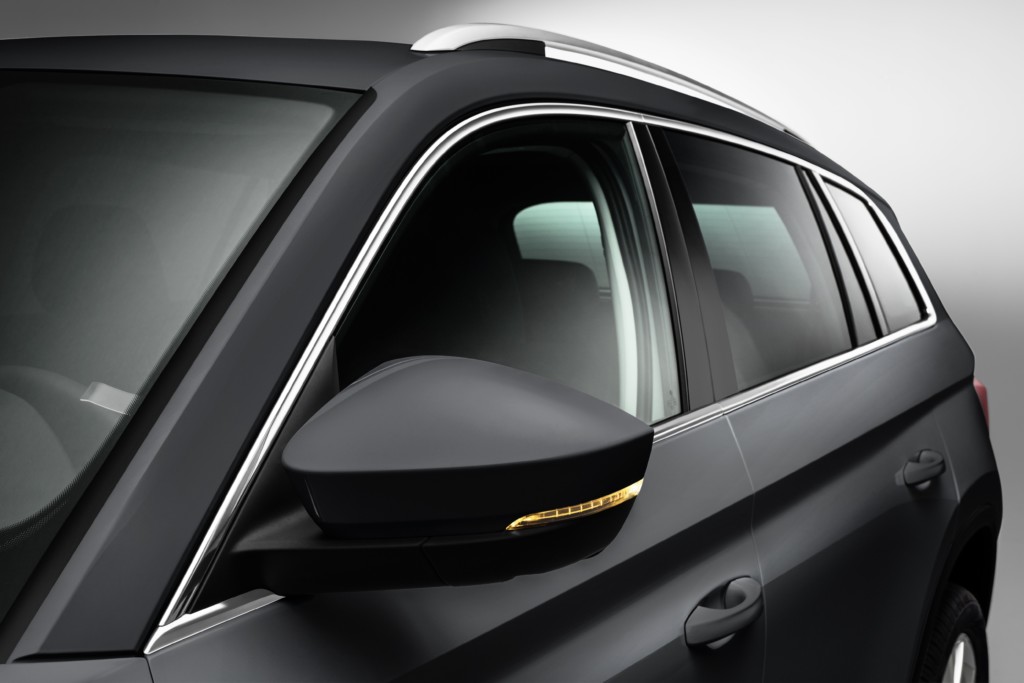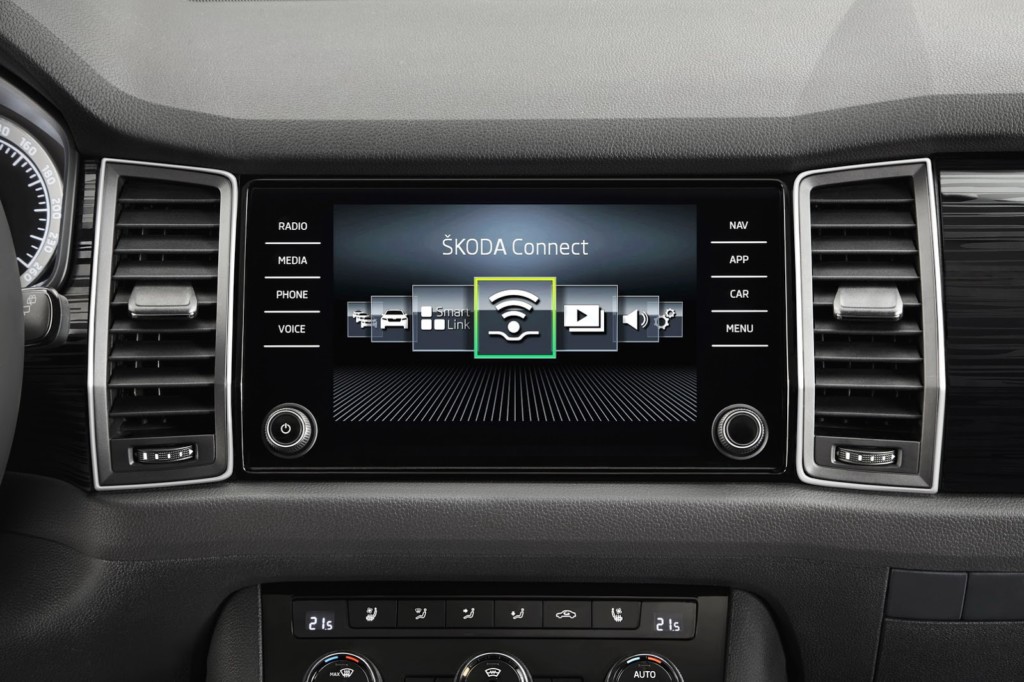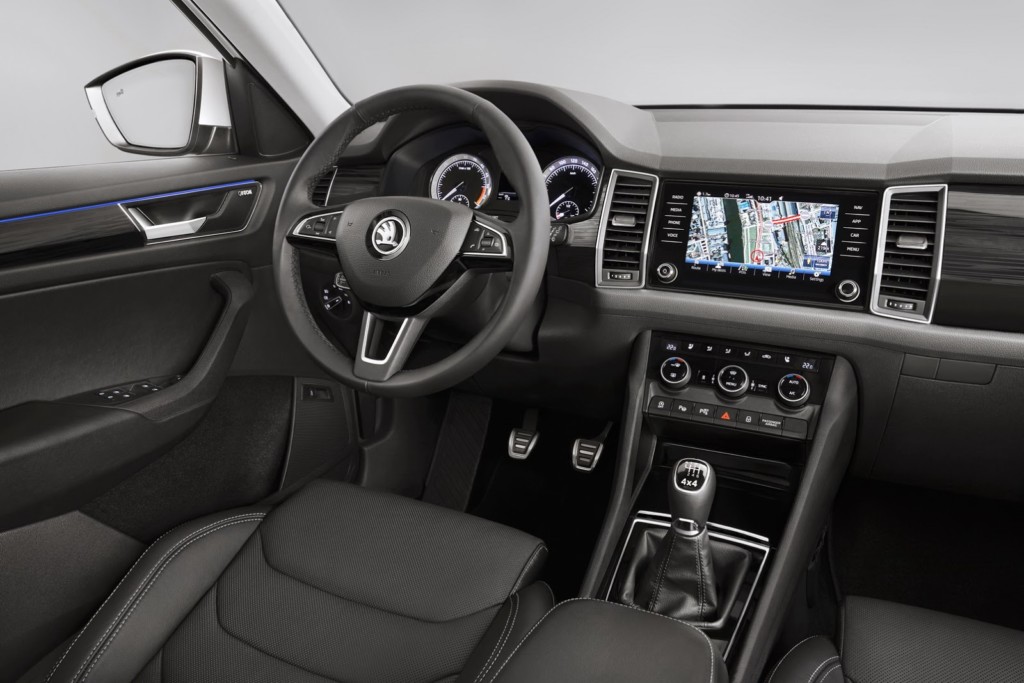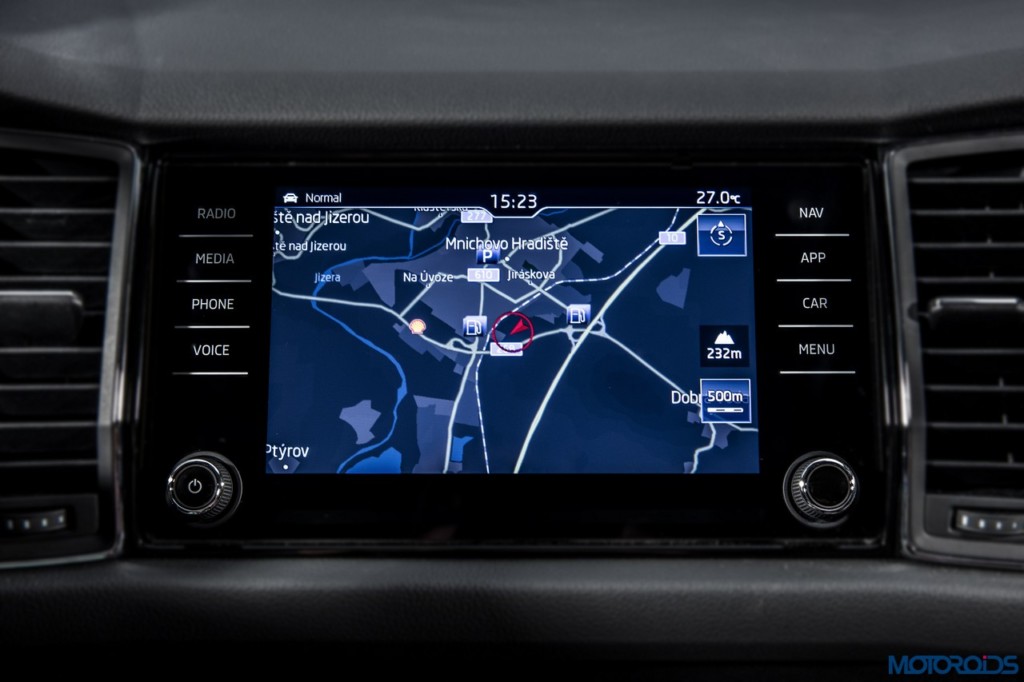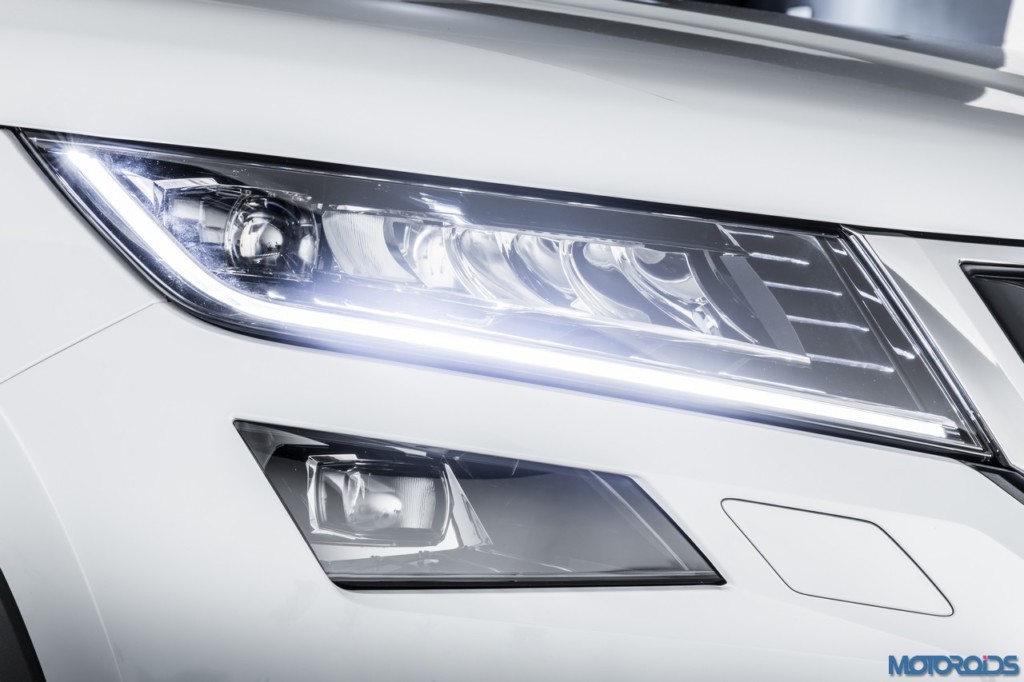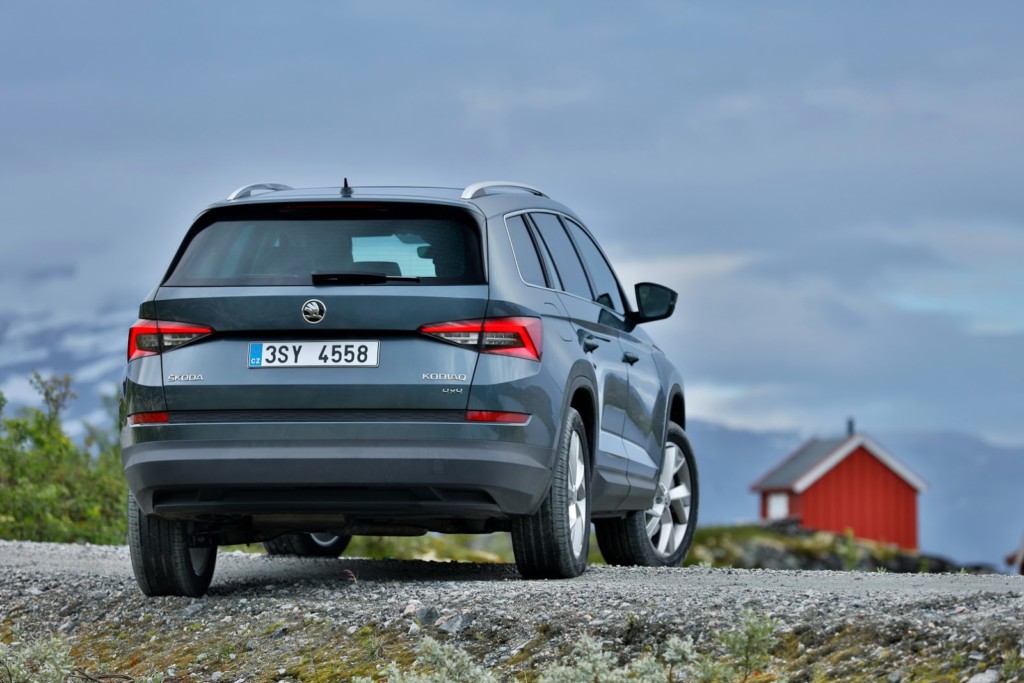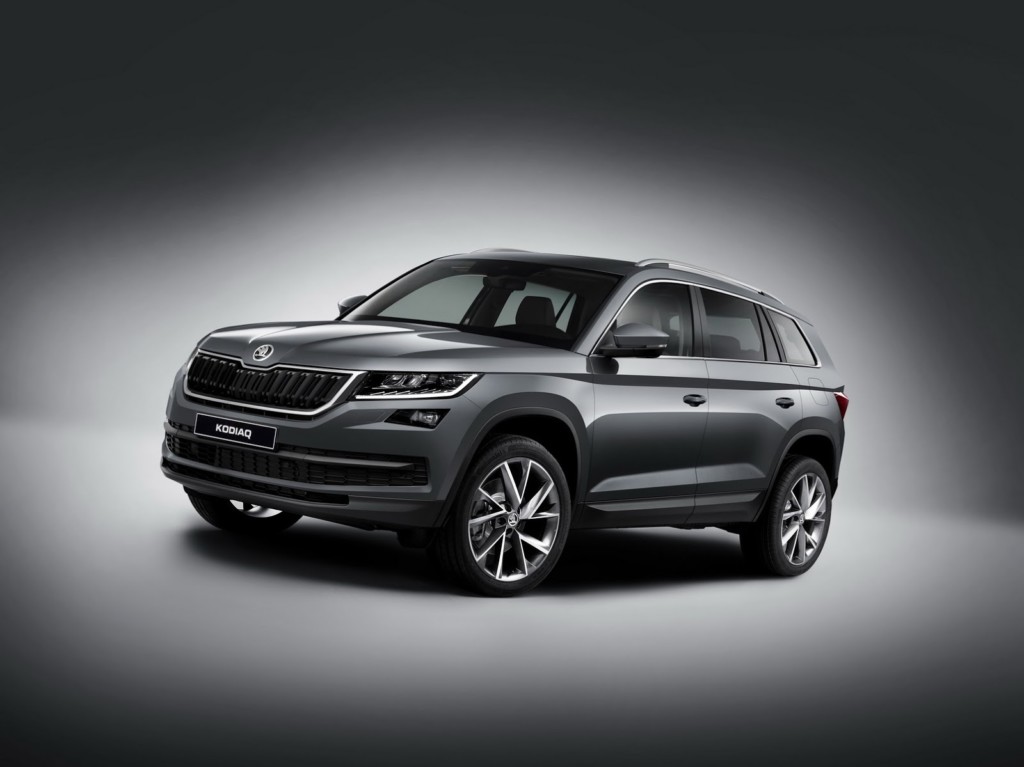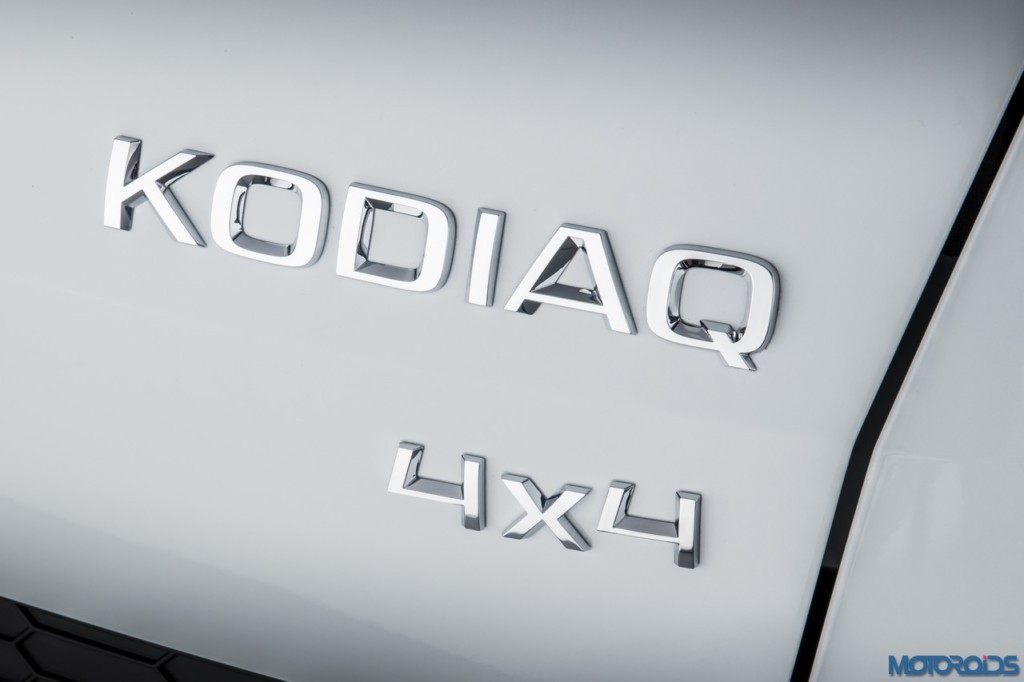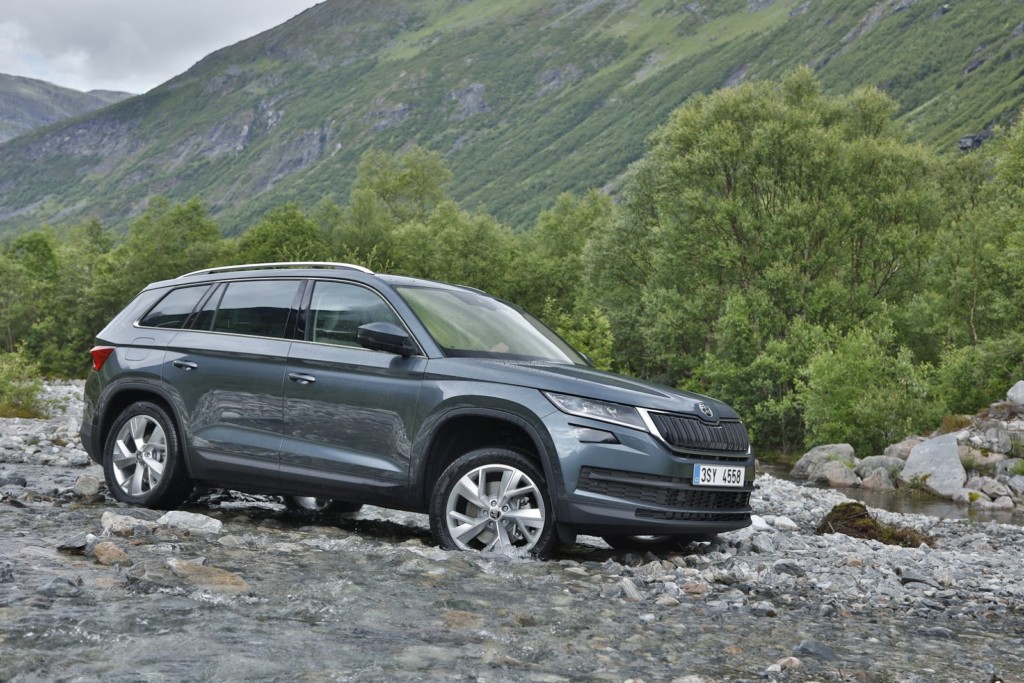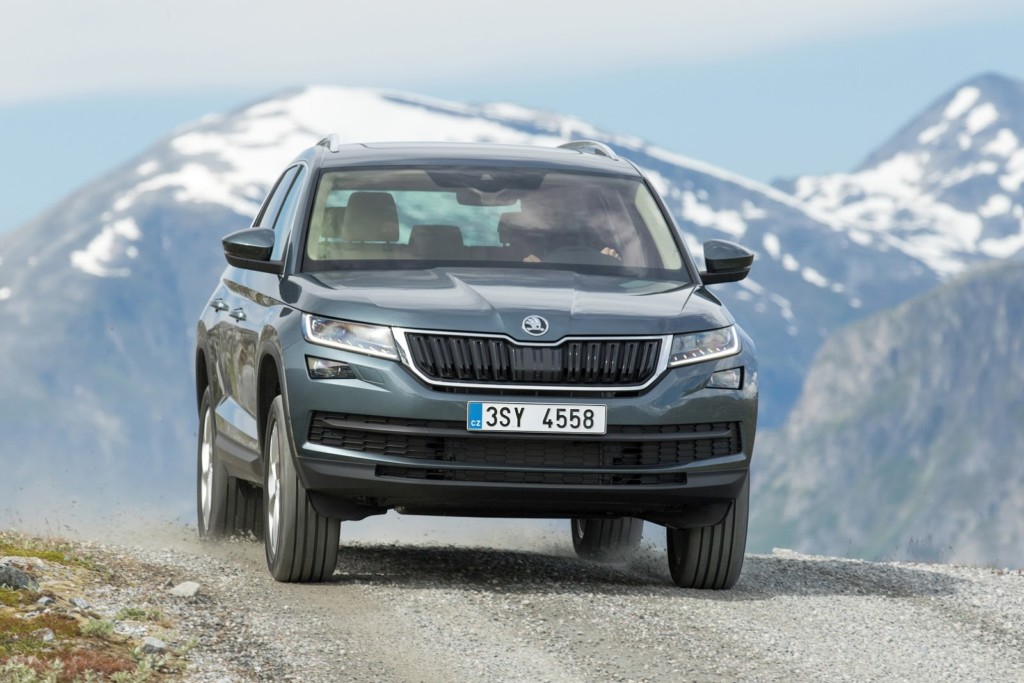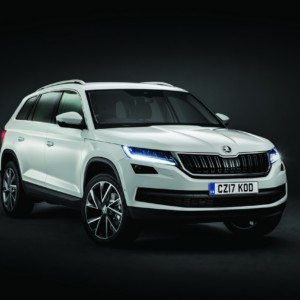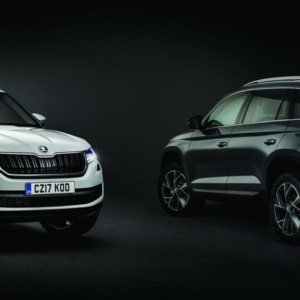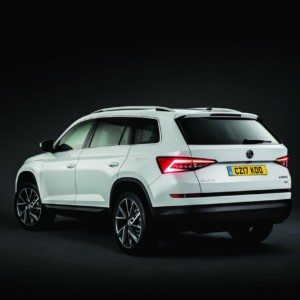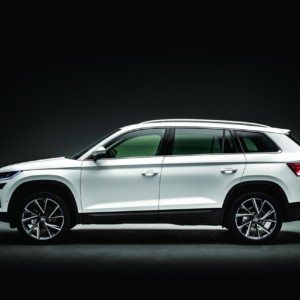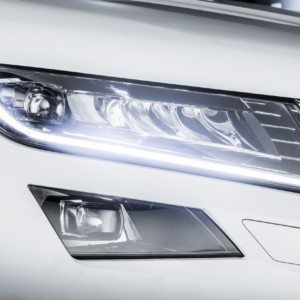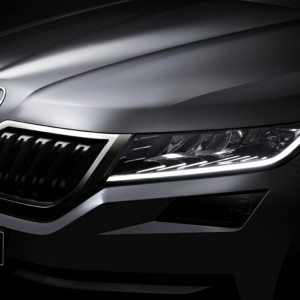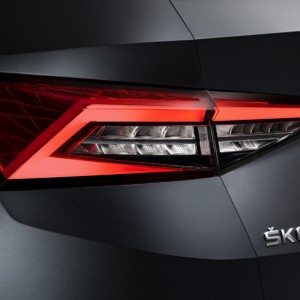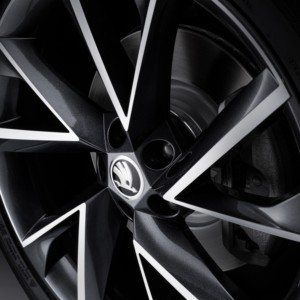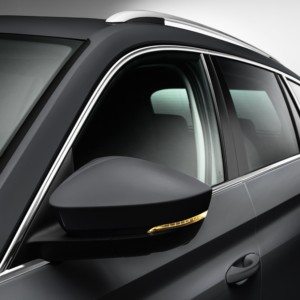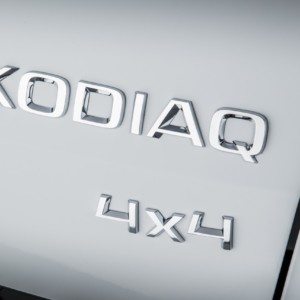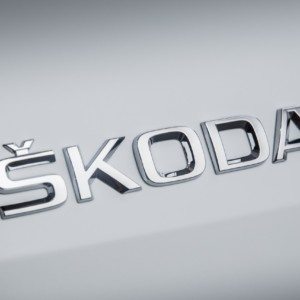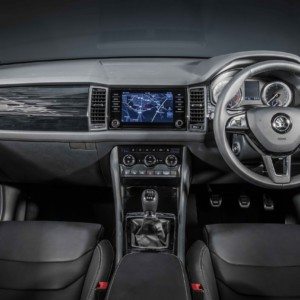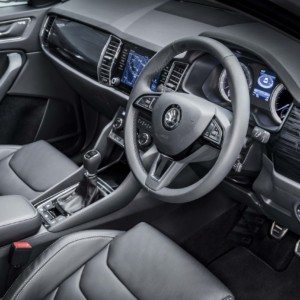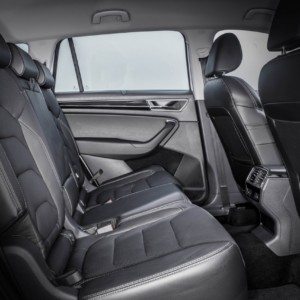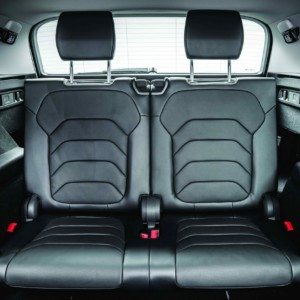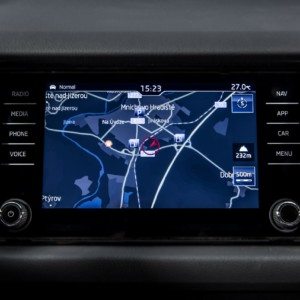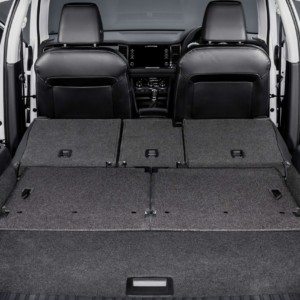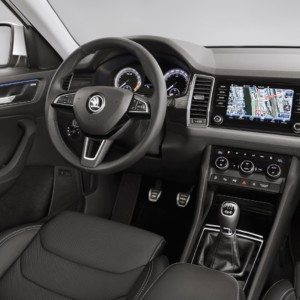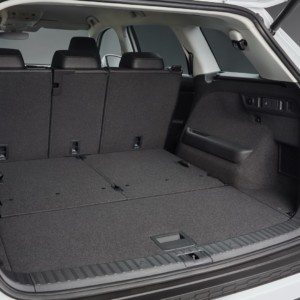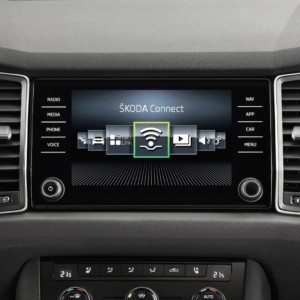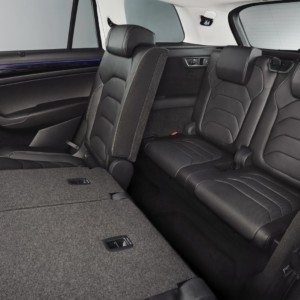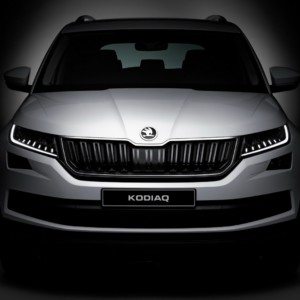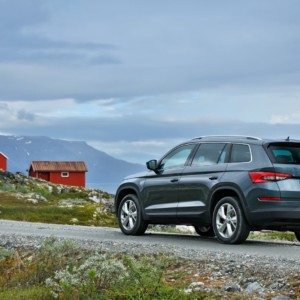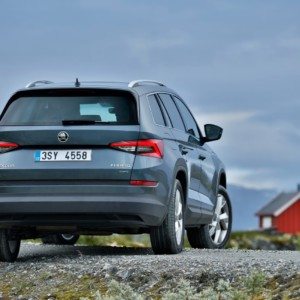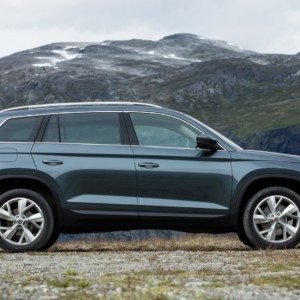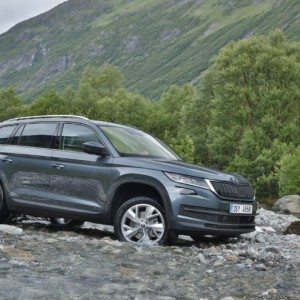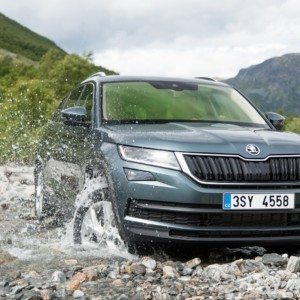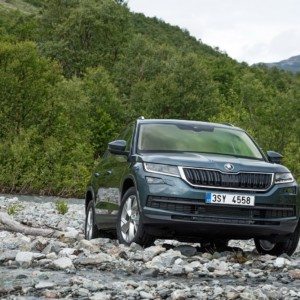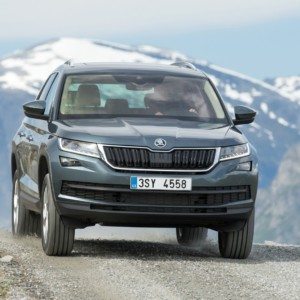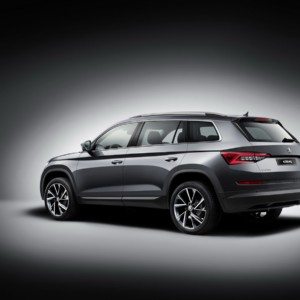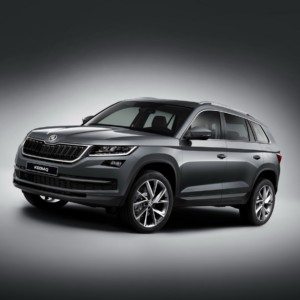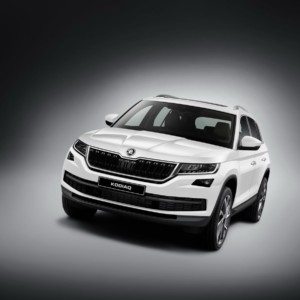ŠKODA has taken the wraps of its first large SUV, the Kodiaq, which should be India bound sometime in late-2017 or 2018.
“With the ŠKODA Kodiaq, we are striking out in a new direction and opening up new markets,” says ŠKODA CEO Bernhard Maier. “With our first large SUV, we are conquering a new segment for the brand – and new customer groups. Our new addition to the ŠKODA model range is truly as strong as a bear: it makes the brand even more attractive thanks to its concept, striking design and as the first ŠKODA that has the option of always being online and thereby offering more comfort, safety and real-time information.The ŠKODA Kodiaq is at the forefront of ŠKODA’s extensive SUV campaign.”
ŠKODA Board Member for Technical Development, Christian Strube, added, “The ŠKODA Kodiaq offers all of our brand’s strengths: well-thought-out functionality, superior interior space and excellent value for money. The largest boot compared to the competition and the optional third row of seats alone make our new SUV the ideal companion for day-to-day demands. And when it comes to driver assistance systems, infotainment and connectivity, the ŠKODA Kodiaq proves ŠKODA’s innovative capabilities, offering the technology of higher classes and therefore putting itself at the top of its segment.”
Exterior design
The Kodiaq’s design represents the brand transfers its new design language into the SUV segment. Which means that the Kodiaq’s bodywork is rife with clear, precise and clean cut lines. The Kodiaq’s front end is characterised by a wide, three-dimensional radiator grille, and raked, full-LED headlights. Inside the two double-headlights, the crystalline structure is inspired by traditional Czech crystal glass art, also reflected in the SUV’s contoured surfaces and tail lamps.
The Kodiaq’s sides feature a long wheelbase, crisp lines, short overhangs, and slightly angular wheel arches. At the back, there’s a sculpted tail gate, while LEDs are used as standard in the C-shaped rear light design. A choice of 14 paint finishes is available – four standard colours and ten metallic colours. The appearance of the components varies according to the three trim levels – Active, Ambition and Style.
In the Active and Ambition trim levels, the Kodiaq comes equipped with 17-inch wheels as standard; 18-inch wheels are standard in the Style trim level. The range of optional extras extends to polished 19-inch wheels.
Body
The ŠKODA Kodiaq is 4,697 mm long, 1,882 mm wide and 1,676 mm tall (including roof rails); its wheelbase measures 2,791 mm. The Kodiaq is based on Volkswagen Group’s modular transverse matrix (MQB). For the body, a combination of hot-stamped metal sheets forms the backbone. With the entry-level TSI engine and front-wheel drive, the large SUV weighs 1,452 kg (without driver), or 1,540 kg with the 1.4 TSI engine and all-wheel drive.
Interior
The ŠKODA Kodiaq is just 40 mm longer than the ŠKODA Octavia, but claims to offer a larger-than-average interior for the SUV segment. The large SUV’s interior length is 1,793 mm, elbow room is 1,527 mm in the front and 1,510 mm in the rear. Head room is 1,020 mm in the front and 1,014 mm in the rear. Rear legroom measures up to 104 mm.
The interior is characterised by vertical elements, such as the four large air vents and the large display splits the instrument panel into two equal sections for the driver and passenger. The cockpit features large circular instruments that have a precise and clear design. The steering wheel is available in a choice of different versions – one of which is heated. The optional tri-zone climate control, has its own control panel for the rear seats.
As an option the front seats can be heated, ventilated and adjusted electronically; the latter also includes a memory function. The ŠKODA Kodiaq’s rear seats can be folded in the ratio 60:40, and can also be moved lengthways by 18 cm as standard and the angle of the backrest is individually adjustable.
Two more seats in the third row are available – the Kodiaq is ŠKODA’s first 7-seater. As an alternative to the standard fabric seats, a fabric/leather combination and leather or Alcantara are offered. Optional ambient lighting adds an individual touch to the interior and is built into the door trims and can be set to ten different colours.
Boot
With a volume of 720 to 2,065 l (5-seater with the rear seats folded down), the ŠKODA Kodiaq claims to offer the largest boot within its class and if the optional folding passenger seat is chosen, the SUV can transport items up to 2.80 m long. An electrically operated tailgate is available, and can (as an optional extra) be opened with the firm’s virtual pedal system. The ŠKODA Kodiaq with the TDI/DSG/4×4 drivetrain can tow a trailer weighing up to 2.5 t with an electrically retractable tow bar.
Equipment
The ‘Simply Clever’ features available in the ŠKODA Kodiaq include door-edge protection: which deploy automatically thanks to preloaded springs when opening the car door and prevents the metal edge of the door from coming into contact with a garage wall or an adjacent vehicle. When shutting the door, the trim folds itself back in. This prevents bumps and scratches to your own car, as well as neighbouring vehicles.
Electric child safety lock for the rear doors, In-Car Communication and the sleep package headrests are available as optional extras for the first time in a ŠKODA. All in all, the ŠKODA Kodiaq provides more than 30 ‘Simply Clever’ features, seven of which are new.
Driver assistance systems
ŠKODA’s large SUV is available with a wide range of driver assistance systems like Trailer Assist, Manoeuvre Assist, Area View system, Front Assist including City Emergency Brake, Predictive Pedestrian Protection, Adaptive Cruise Control (ACC), Traffic Jam Assist, Lane Assist, Blind Spot Detect, Rear Traffic Alert Driver Alert, Emergency Assist, Crew Protect Assist, Multi-Collision Brake, and Travel Assist with Traffic Sign Recognition. All of these rely on a bevy of sensors and surround-view cameras with wide-angle lenses which are located in the front and rear as well as the wing mirrors of the ŠKODA Kodiaq.
Infotainment systems
A range of infotainment systems are available for the Kodiaq, and feature capacitive touch displays in a glass design – they react to the touch of a finger and not just to pressure. The basic functions use physical buttons and control dials.
The Swing infotainment system with its 6.5-inch screen comes as standard. It can be supplemented with a smartphone Bluetooth connection and ŠKODA SmartLink. SmartLink supports the use of Apple CarPlay, Android Auto and MirrorLinkTM in the car. When the customer connects their phone to the USB port, the relevant setting is shown on the infotainment display.
The optional Bolero infotainment system features a high-definition 8.0-inch touchscreen, including the In-Car Communication (ICC) function. The hands-free microphone records the driver’s voice, and transfers it to the back seats via the rear speakers.
The Amundsen navigation infotainment system builds on the capabilities of the Bolero system with a navigation function as well as a special display mode for driving off-road or even in narrow car parks. The top-of-the-range infotainment system, the Columbus navigation system, adds a 64-GB flash memory and DVD drive. An optional LTE module facilitates high-speed online access in the ŠKODA Kodiaq. Using a WLAN hotspot (optional), passengers can use their mobile devices to surf, stream and send emails at their convenience.
The optional Phonebox charges a smartphone inductively using the Qi standard and connects to the car aerial – both processes occur wirelessly. The Canton Sound System features ten speakers, including a subwoofer, and has a power output of 575 watts. As an option, the ŠKODA Kodiaq can be equipped with tablet holders that can be attached to the front headrests. The devices can be charged using optional 230 V and USB sockets.
With its infotainment and connectivity solutions, the Kodiaq can always be online, thanks to the new ŠKODA Connect feature that helps with remote access to the vehicle as well as assistance. ŠKODA Connect is comprised of two categories – the Infotainment Online services that provide more information and real-time navigation details, while Care Connect provides remote access as well as assistance. The Emergency Call after an accident is the most important feature of the Care Connect services: the Emergency Call (eCall) is sent directly to an emergency call centre when a restraint system is deployed. This comes as standard and is integrated into the Care Connect services.
Engines
Five powertrains, two TDI and three TSI engines, make up the engine range at the launch of the ŠKODA Kodiaq. They have capacities of 1.4 and 2.0 l, and power output ranges from 92 kW (125 PS) to 140 kW (190 PS). The diesel and petrol engines feature turbocharged direct injection and fulfil EU6 emission standards. All engines feature a Stop-Start system, brake energy recovery and a powerful thermo-management system, contributing to low consumption.
The 2.0 TDI is available in two versions. The first version generates 110 kW (150 PS) and 340 Nm. The top-of-the-range version delivers 140 kW (190 PS) and 400 Nm. On average, the entry-level TDI consumes 5.0 l of diesel (56.5 mpg and 131 g CO2/km) per 100 km. The most powerful diesel engine accelerates the large SUV from 0-100 km/h in 8.6 s and reaches a top speed of up to 130 mph.
The range of petrol engines consists of two 1.4 TSI engines and one 2.0 TSI. The entry-level version of the compact four-cylinder generates 92 kW (125 PS) and 200 Nm of torque. Its NEDC consumption is 6.0 l per 100 km, which corresponds to 47.1 mpg and 140 g CO2/km. In the more powerful version, the 1.4-litre exerts 110 kW (150 PS) and 250 Nm of torque; its ACT system – Active Cylinder Technology – shuts down the second and third cylinders when the load and engine speed are low. The top-of-the-range 2.0 TSI petrol engine features a new combustion process for high efficiency. Power output is 132 kW (180 PS), torque is 320 Nm.
Transmission
The ŠKODA Kodiaq is available with various transmission technologies. Depending on the engine, there is a 6-speed manual gearbox or DSG transmissions with six or seven speeds. The new 7-speed dual-clutch transmission is making its debut in a ŠKODA and has been designed for powerful engines with torque of up to 600 Nm. The driver can operate the 7-speed DSG in automatic mode, or control it manually using the gear lever or steering wheel paddles. In Eco mode the ŠKODA Kodiaq will coast at speeds above 12mph when the driver takes their foot off the accelerator.
Both top-of-the-range engines – the TDI with 140 kW (190 PS) and the TSI with 132 kW (180 PS) – are coupled with the 7-speed DSG and all-wheel drive. The 1.4 TSI with 110 KW (150PS) and all-wheel drive is available with either the manual 6-speed transmission or 6-speed DSG; front-wheel drive is coupled with the 6-speed DSG. The entry-level diesel with all-wheel drive is offered with the manual 6-speed transmission or the 7-speed DSG; the front-wheel-drive version is offered solely with the 7-speed DSG. The entry-level TSI is available with manual 6-speed transmission and front-wheel drive.
The all-wheel-drive system with electronic control is available for most engine variants. The centrepiece of the all-wheel drive is an electronically controlled multi-plate clutch. The control unit constantly calculates the ideal driving torque for the rear axle; loss of traction is claimed to be virtually eliminated due to a control system that is dependent on driving status and when in overrun or at low load, drive is via the front axle, which saves fuel.
Chassis
The MacPherson front struts consist partially of aluminium; the steel four-link rear axle absorbs the longitudinal and transverse forces separately, and the power steering uses an electro-mechanical drive. The brakes – with ventilated brake discs at the front – works in conjunction the electronic differential lock XDS+, which is a function of the Electronic Stability Control (ESC).
As an optional extra, ŠKODA is making Driving Mode Select available in teh Kodiaq. It allows the driver to adjust the operation of the engine and DSG management, power steering, air conditioning and other systems in Normal, Eco, Sport and Individual modes. The all-wheel-drive versions also offer Snow mode, which adapts the operation of the ABS, ASR and ACC (if fitted) systems, as well as the engine management and electronically controlled, all-wheel, multi-plate clutch to slippery road conditions.
Adaptive Dynamic Chassis Control (DCC) is also available as an option, and is integrated into Driving Mode Select. Here, electric valves control the work of the shock absorbers depending on the situation. Using DCC, the driver can choose between Comfort, Normal or Sport modes.
Off-road mode can be selected by the simple touch of a button (optional for the all-wheel-drive versions in combination with Driving Mode Select). Here, the chassis, engine management and brakes adjust their operation specifically to rough terrain. This mainly involves pulling away, traction and deceleration. In off-road mode, Hill Descent Assist helps the driver to safely drive downhill over rough terrain by braking appropriately.

